I often wish pasta came in smaller packages. Sure, I can eat a lot of pasta, and whoever decided one pound serves eight is not from this universe. But I also think 12 ounces—three-quarters of a typical box—is the perfect amount of pasta for a meal (for two with leftovers, or a family of four), making room for plenty of sauce and yummy mix-ins. Which is why so many of my recipes call for that annoying almost-but-not-quite-entire box. This perfect pasta-sauce ratio, however, leaves us with an imperfect amount of lonely pieces at the bottom, returned to the pantry only to be forgotten or looked upon with occasional frustration for taking up space.
As with most culinary conundrums, generations of cooks before us have provided the solution. Here, it’s pasta mista, meaning “mixed pasta,” a collection of random shapes made purposeful. One (read: I) might think that throwing tiny tubes, broken lasagne sheets, and little spirals into one pot would break some unspoken rule of Italian cooking. But this couldn’t be further from the truth. Italian cuisine is, first and foremost, resourceful, born from necessity and the poor. It’s about reducing waste and finding ways to turn something overlooked into a satisfying meal. Pasta mista is then, perhaps, the most Italian pasta of all. (You might remember the recipe swap I did with
in January to tease her newest cookbook, Cucina Povera—literally “poor cooking” or “poor kitchen”—which featured none other than pasta mista!)Pasta mista’s origins lie in Naples, the historical hub of dried pasta production, where it’s known as ‘pasta ammiscata,’ ‘ammescata,’ or ‘meschiafrancesco’ in dialect. Travel just south of the city’s center and you’ll arrive in Gragnano, a neighboring town situated between the Monti Lattari mountains and the Bay of Naples. Gragnano is considered the birthplace of dried pasta, with factories dating back to the 14th century. The area’s spring water, optimal humidity levels, and sea breezes coalesce perfectly for drying high-quality pasta: By the 16th century, it had become one of Italy’s leading producers, and by the 19th century, it boasted over 300 factories—many family-owned and following their own unique recipes—churning out a wide variety of shapes and styles.
With such prolific pasta production came inevitable leftovers. The high-quality pasta coming out of Naples was also expensive and unaffordable to many of the residents in the surrounding areas. So pasta makers would collect the scraps—the broken bits, the jagged corners—into bins or drawers and sell them by weight at a lower price (pasta was sold by weight for most of its history, even into the ‘70s). Over time, pasta mista became a staple of Neapolitan cooking. You’ll find it mostly in soups and stews, like the popular pasta e fagioli (pasta and beans) and lesser-known pasta e patate con la provola (a wonderfully rich pasta, potato, and cheese soup). Now you can even spot packages of pasta mista on supermarket shelves, made by some of Italy’s most prestigious producers. Rachel Roddy, author of one of my favorite-ever cookbooks, An A-Z of Pasta, adds: “Of course pasta mista was also assembled at home, ends of packets rounded up like unruly children and put in one place.”
Although pasta mista is typically reserved for dried pasta, it’s an equally handy trick for fresh shapes. One of my most popular pasta workshops focuses on southern Italian “hand-formed” pastas—that is, rustic, equipment-free shapes like cavatelli and orecchiette, made by the same poor communities that were buying pasta mista centuries ago. In those classes, we try our hand at a variety of shapes and fill our trays with a little bit of this, a little bit of that. At the end of the night, I throw everything into the pot together and we enjoy playful platefuls that remind us of the fun we’d had making them.
Today’s recipe, I’ll admit, is a little selfish, giving me an excuse to put my personal collection of pasta mista to use. These are the fresh shapes that have been piling up in the freezer over the last few months of workshops and recipe development. You’ll notice they are all, more or less, of similar size: It’s not news that different pastas cook and different rates, and I’d say you should be mindful of that here, but not rigid. The pleasure of pasta mista lies in its whimsy and its textures, so it follows tradition for some pieces to have more bite than others. Think of it as a little pasta adventure!
Finally, I’ve paired my pasta mista with an unconventional take on one of my favorite high-summer dishes, pasta alla Norma, a Sicilian classic that celebrates tomatoes, basil, and the often-underrated eggplant. Instead of cooking the sauce over the stove, I’m opting for a low-and-slow oven to do most of the work for me, gently breaking down tomatoes and garlic in olive oil until soft and sweet. Everything confit—slowly cooking something in fat—is all the rage right now, and with good reason: It’s really freaking delicious. (Any leftovers, though you’re unlikely to have them, are perfect for smashing on grilled bread.) I’ve also taken advantage of the beautiful fairy tale eggplants at my local market, caramelizing them until silky and tender. You’re welcome. :)
Pasta Mista with Tomato Confit & Caramelized Eggplant
Serves 2 to 4
2 pounds (900 grams) cherry tomatoes
8 to 10 garlic cloves, peeled
1 teaspoon kosher salt, plus more to taste
½ teaspoon crushed red pepper flakes
4 sprigs fresh oregano, thyme, or a mix
1½ cups (355 ml) plus 2 tablespoons (30 ml) extra-virgin olive oil, divided
8 ounces (225 grams) fairy tale eggplants, or Japanese or Italian eggplant
1 pound (450 grams) fresh or 10 to 12 ounces (285 to 340 grams) dried pasta mista*
4 ounces (115 grams) torn burrata, cubed fresh mozzarella, or grated ricotta salata, for serving
Torn fresh basil, for serving
Fennel pollen, for serving (totally optional but so delicious!)
Flaky salt, for serving
*Pan-fried homemade or store-bought potato gnocchi also works great here!
Heat the oven to 300°F.
To a 9x13 (preferably metal) baking dish, add the tomatoes, garlic, red pepper flakes, salt, and 1½ cups oil. Stir to combine, then nestle in the herb sprigs. Roast in the oven, checking occasionally, until the tomatoes are wrinkled and the garlic is very soft, about 2 hours. Discard the herbs.
Storage note: The cooled confit (and any leftovers) can be stored, submerged in its oil, in an air-tight container in the refrigerator for up to 2 weeks. Make sure to replenish the oil as needed so the tomatoes and garlic remain covered.
When the confit is almost ready, prep the eggplant: If using fairy tale eggplants, remove the stems* and cut them in half lengthwise. With a paring knife, carefully score the flesh in a cross-hatch pattern. Season the cut sides generously with salt, then arrange them, cut-sides down, on a paper towel-lined sheet pan. Let stand for 30 minutes, then turn them over and pat dry. If using another variety of eggplant, cut it into ¾-inch cubes and skip to the next step.
*I trimmed but did not fully remove the stems because I prefer the look of the dish with the stems intact—if you do the same, make sure to remove them before eating.
Bring a large pot of water to a boil, then season it generously with salt. Add the pasta, stir for a few moments to prevent sticking, and—if using dried pasta—cook according to the package directions until tender or to your liking. If using fresh pasta, cook until tender, about 3 to 5 minutes for the shapes pictured here.
Meanwhile, warm the remaining 2 tablespoons oil in a large skillet over medium heat. If using fairy tale eggplants, add them to the pan in a single layer, cut-sides down, and cook until caramelized, 2 to 3 minutes. Flip and cook one minute more, or until soft. If using cubed eggplant, cook in a single layer, seasoning with salt and turning occasionally, until browned and tender, about 10 minutes. Transfer the eggplant to a plate.
When the pasta is ready, use a spider sieve or slotted spoon to transfer it to a large heatproof bowl (or drain in a colander first). Drizzle some of the tomato confit oil over the pasta and toss to coat.
To serve, layer the confit, pasta, and eggplant into bowls. Drizzle with more confit oil, and top with burrata, basil, fennel pollen (if using), and a pinch of flaky salt. Enjoy warm or at room temperature.

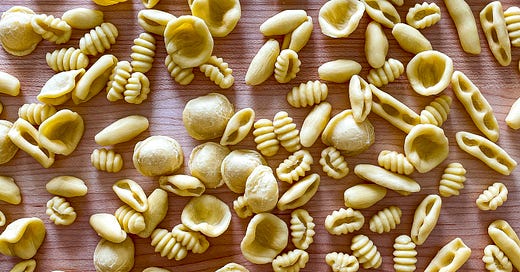


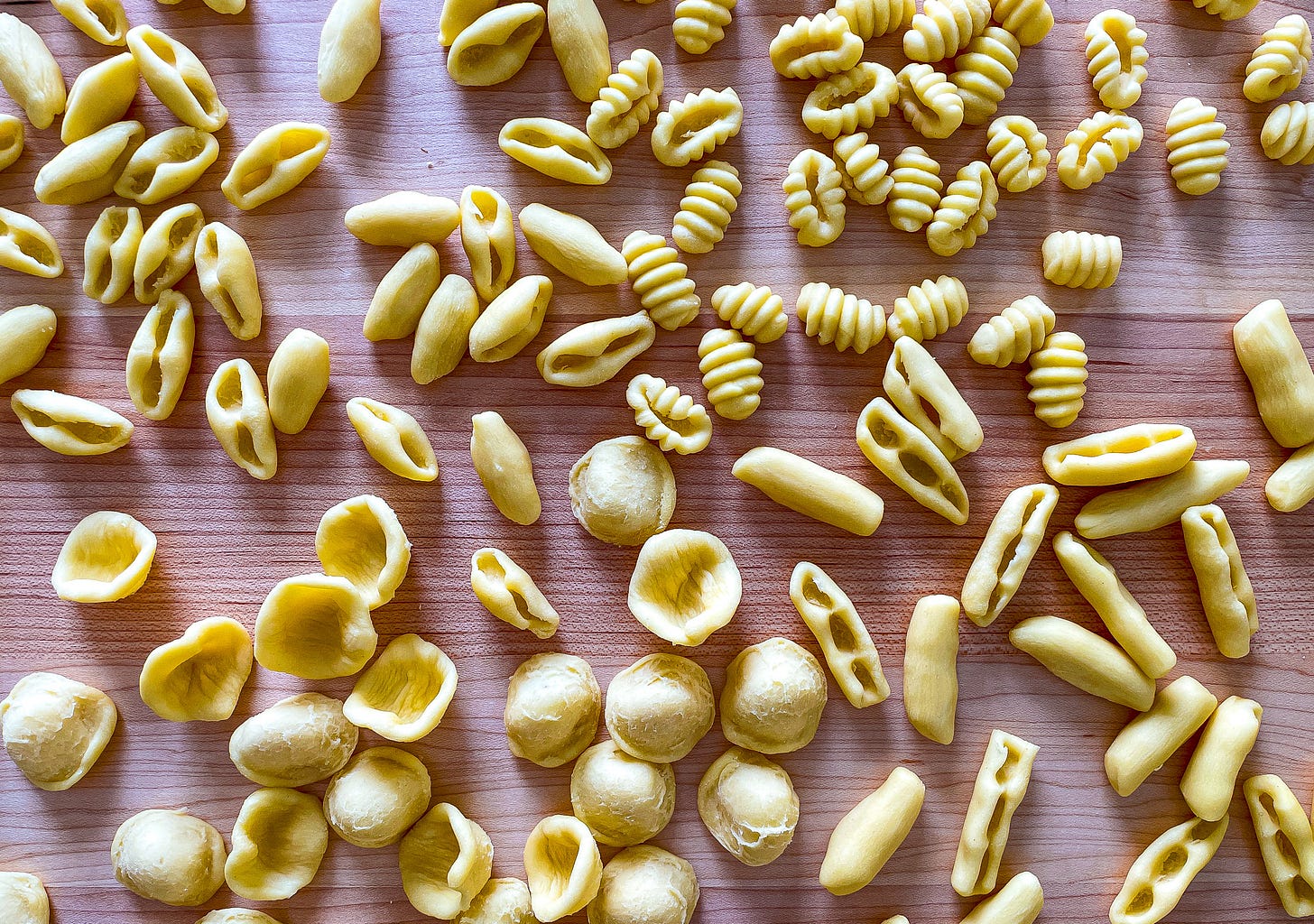
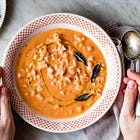
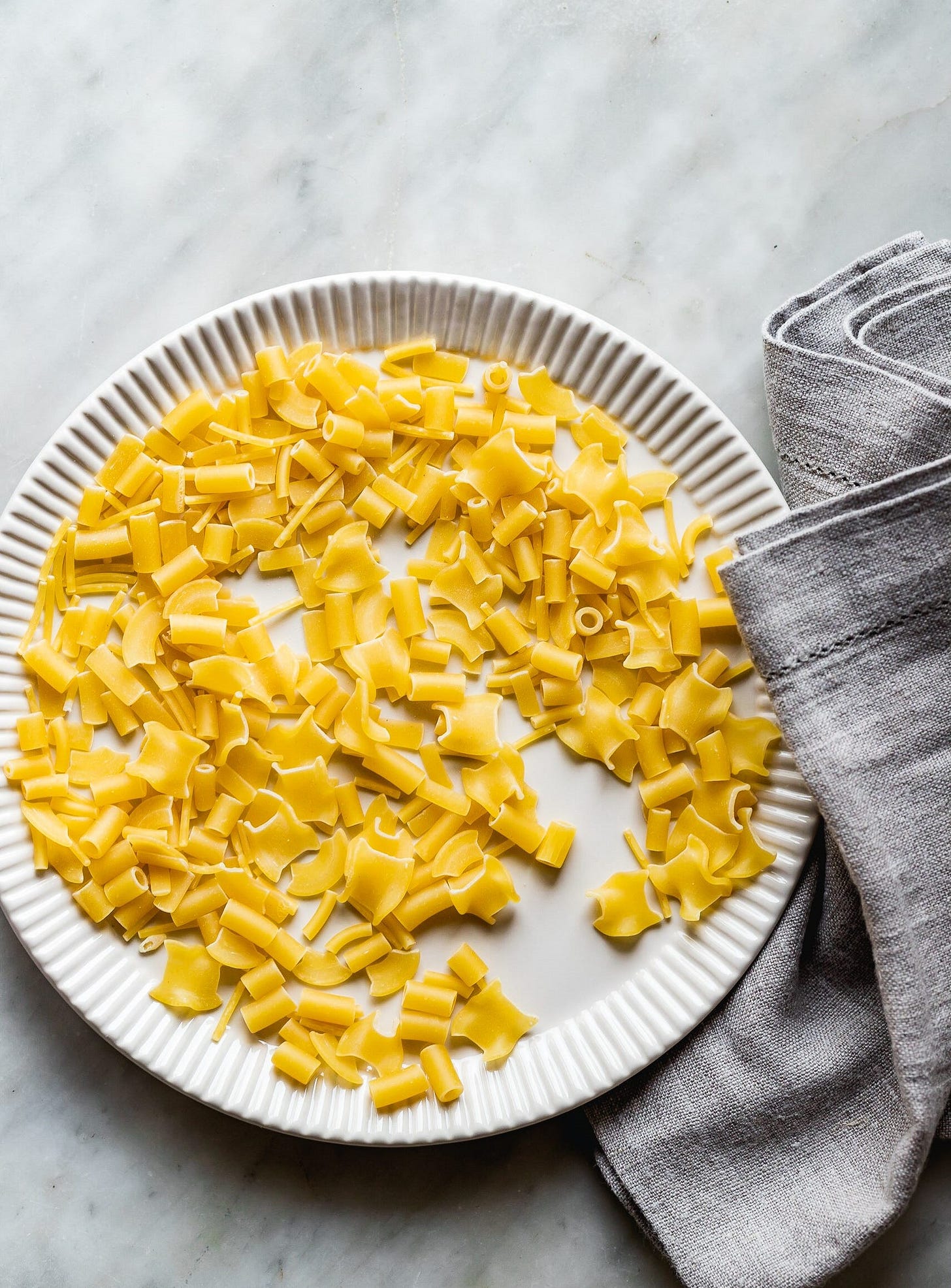
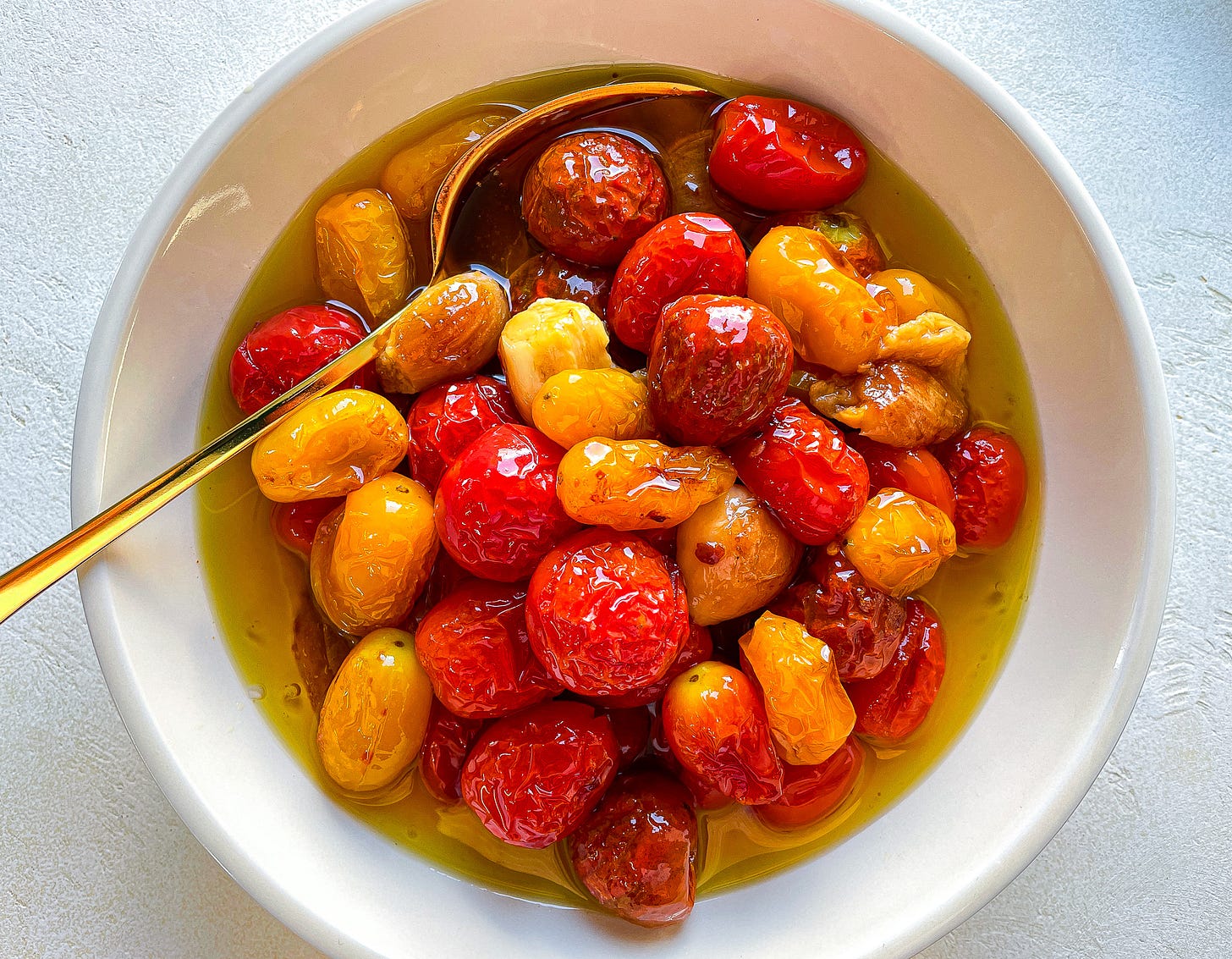
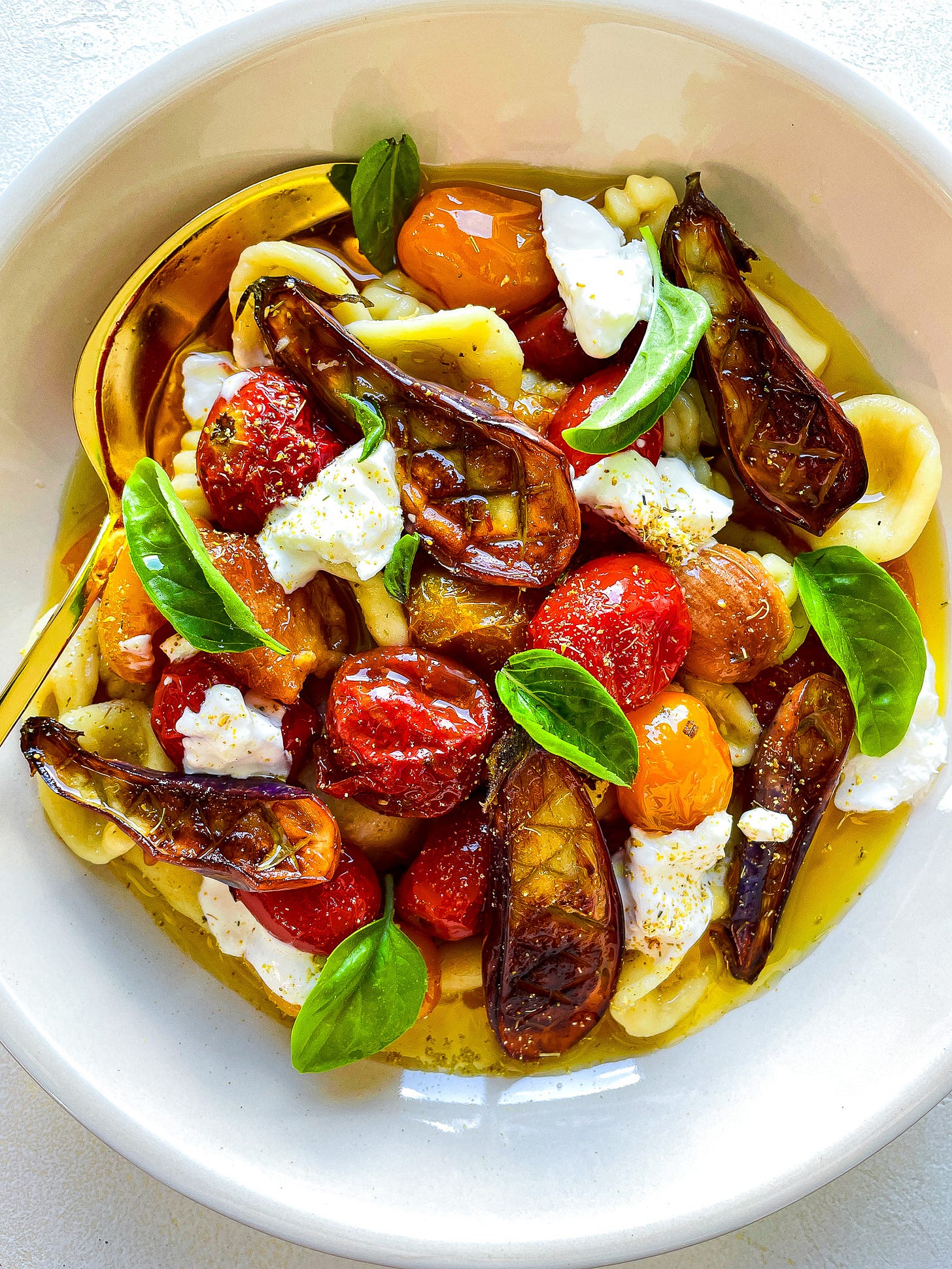
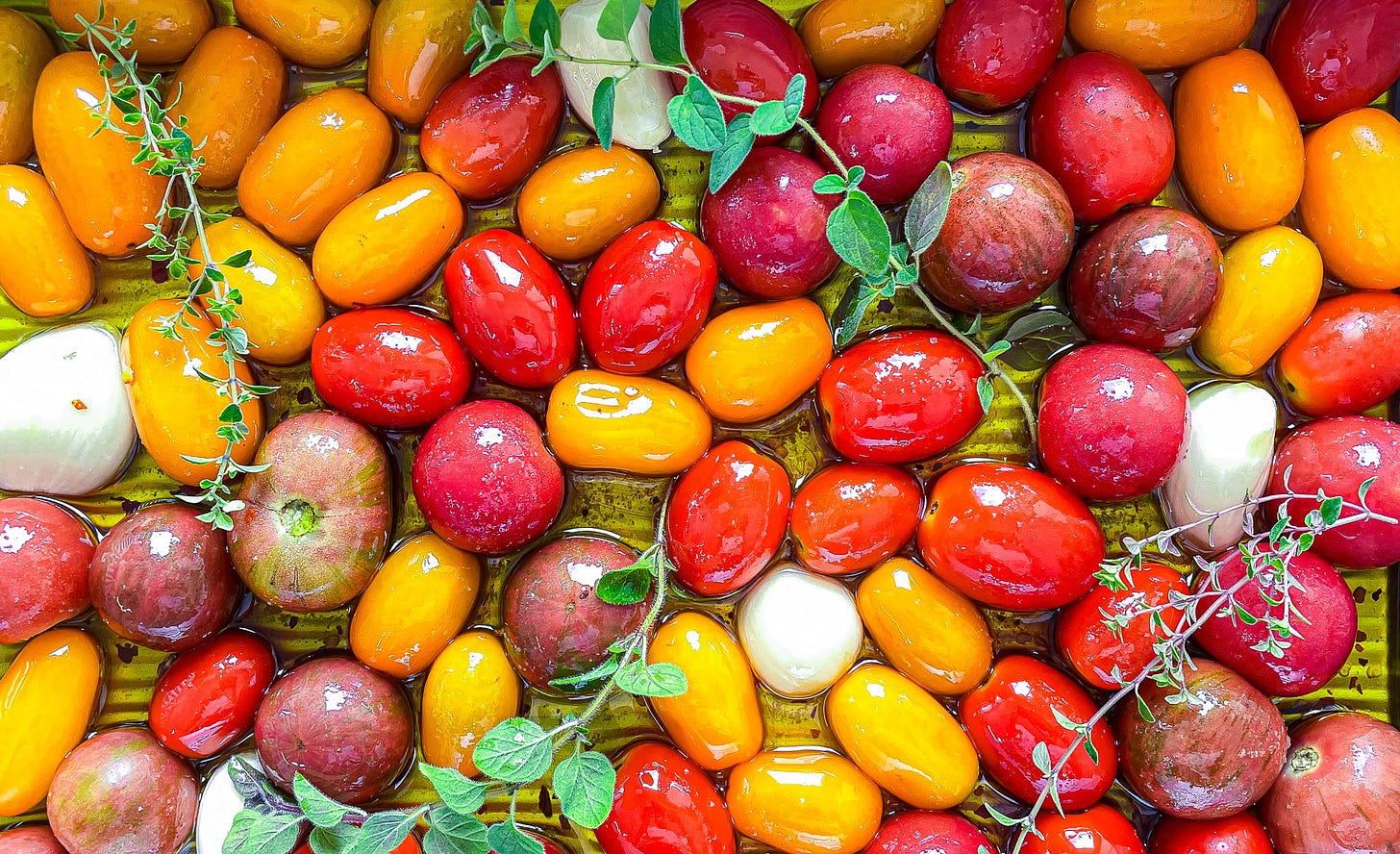
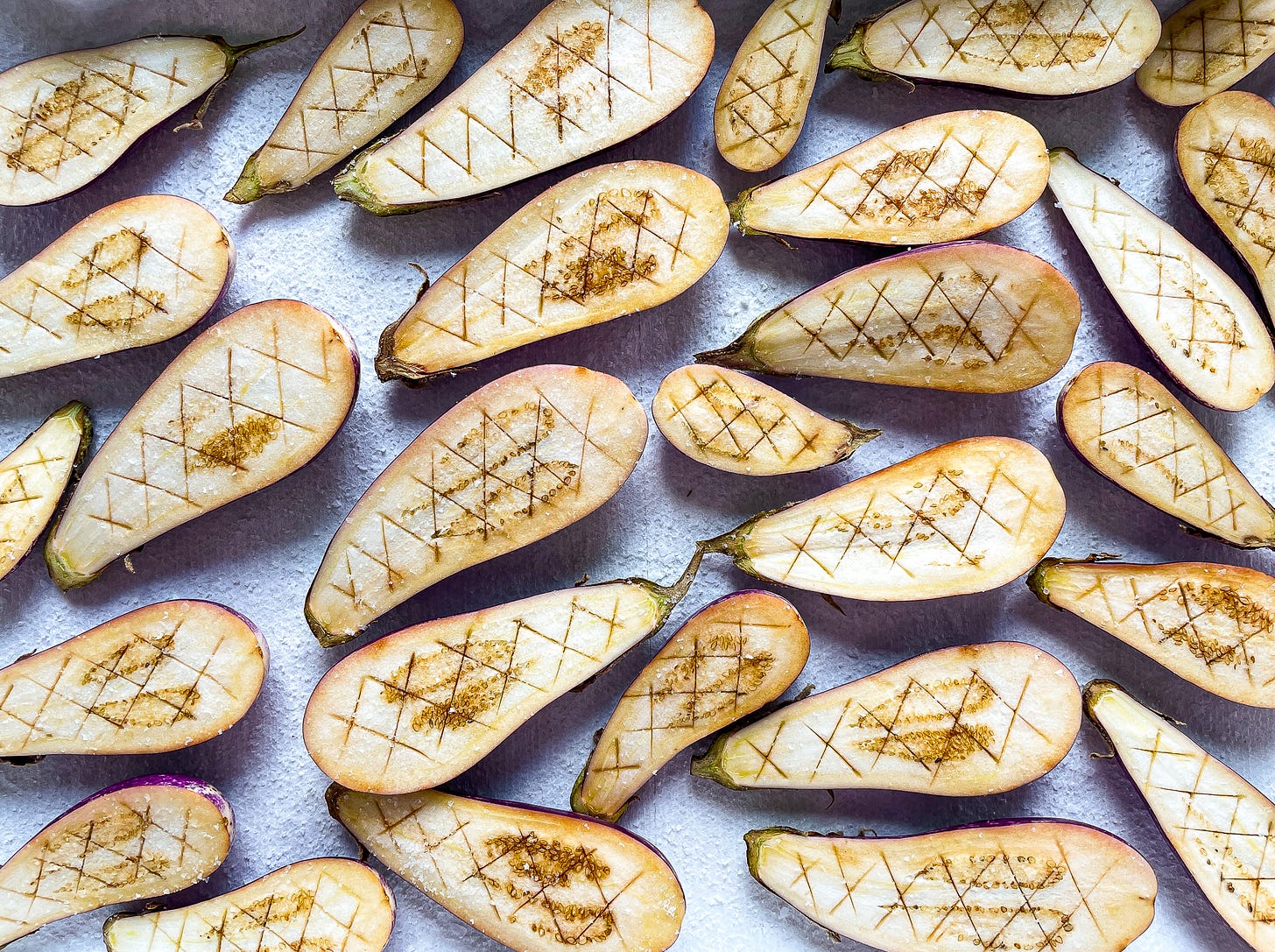
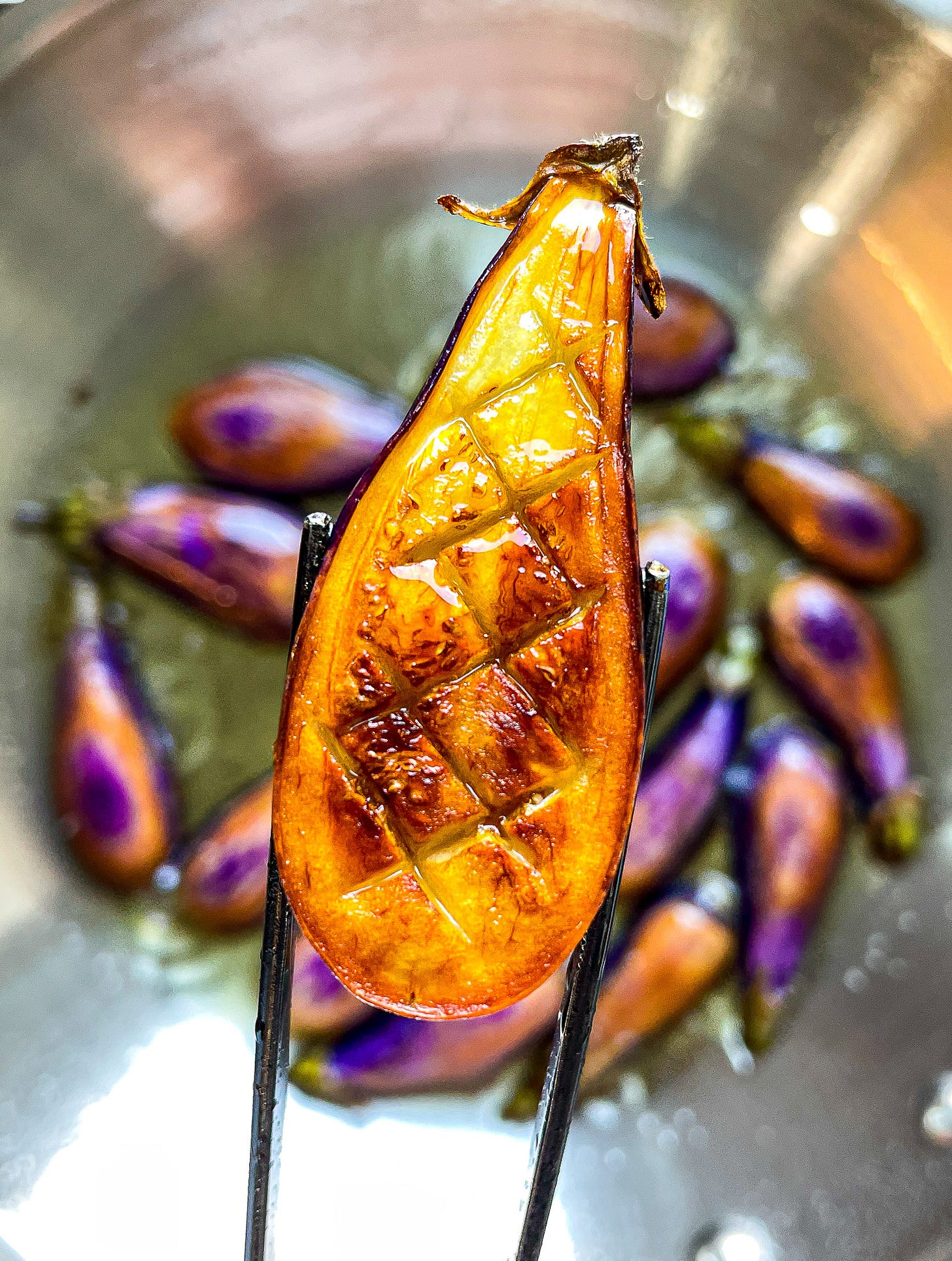
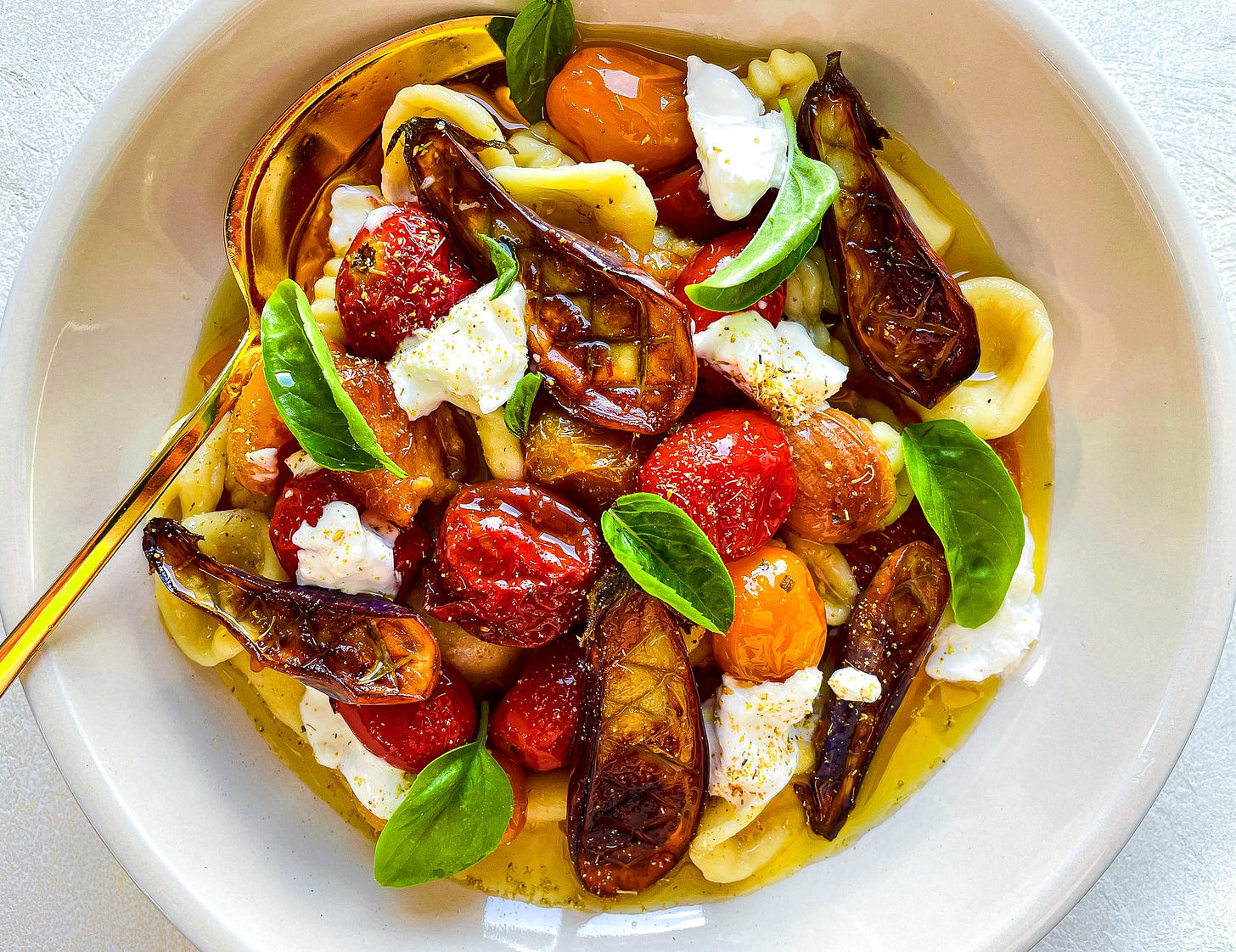
I have a 2 quart mason jar into which I throw all those 2 ounce bag ends, and especially in winter, it makes a lovely baked pasta, either mac-and-cheese or red-meat-sauce with cheese on top. The different textures really spiff up an ordinary mid-week dinner.
I love love love pasta mista, its very concept, and your take on pasta alla norma!